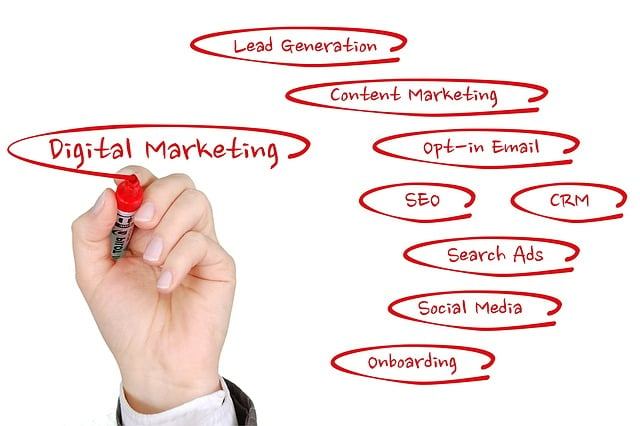TL;DR:
Understanding local fitness audiences is key for effective marketing, especially with AI-driven tools. By analyzing demographic data and behavioral insights like workout times and app usage, marketing teams can segment customers and create personalized content for AI gym websites. For instance, tech-savvy youth in bustling cities might prefer innovative AI experiences, while smaller towns may favor traditional solutions. This personalization enhances engagement through tailored workout routines and nutrition plans, with success measured by KPIs like engagement rates, conversion metrics, retention levels, and user feedback. Continuous monitoring ensures data-driven adjustments to campaign strategies based on the evolving needs of local fitness communities.
Intelligent marketing strategies are transforming the fitness industry by targeting local audiences with precision. This article explores how AI-powered website content personalization can revolutionize gym marketing, catering specifically to diverse demographic and behavioral patterns of potential members. By understanding these insights, gyms can create tailored experiences, enhance engagement, and ultimately drive growth. We’ll provide a step-by-step guide and highlight key performance indicators for successful intelligent marketing campaigns, leveraging AI gym website content personalization.
- Understanding Local Fitness Audiences: Demographic and Behavior Insights
- AI-Powered Website Content Personalization for Gyms: A Step-by-Step Guide
- Measuring Success: Key Performance Indicators for Intelligent Marketing Campaigns
Understanding Local Fitness Audiences: Demographic and Behavior Insights

Understanding local fitness audiences is key to crafting effective marketing strategies, especially with the power of AI-driven tools at our disposal. By delving into demographic data, we can segment customers based on age, gender, income, and location, providing a clear picture of who your typical gym-goer or fitness enthusiast is within that region. For instance, a bustling metropolis might attract younger, tech-savvy individuals seeking innovative AI gym experiences, while smaller towns may have a more diverse mix of ages and preferences for traditional versus high-tech fitness solutions.
Behavioral insights are equally valuable. AI can analyze patterns to reveal habits such as peak workout times, preferred types of exercises, and the use of fitness apps. This information empowers marketing teams to create personalized content for gym websites that resonate with specific interests. For example, a local AI-driven campaign could offer tailored workout routines or nutrition plans based on the demographics and behaviors of its target audience, ensuring a more engaging and successful marketing approach.
AI-Powered Website Content Personalization for Gyms: A Step-by-Step Guide

AI-powered website content personalization is a game-changer for gyms looking to engage their local fitness audiences effectively. Here’s a step-by-step guide to implement this strategy:
1. Data Collection and Analysis: Start by gathering user data, including demographics, exercise preferences, and past interactions with your gym’s website or app. Utilize AI algorithms to analyze these insights, identifying patterns and segmenting users into distinct groups. For instance, you might categorize members based on their fitness goals (e.g., weight loss, strength training) or experience levels (beginner, advanced).
2. Personalized Content Creation: Based on the user segments identified in step one, create tailored content for each group. This could involve crafting special offers, blog posts, or workout routines that resonate with their specific needs and interests. For example, a beginner-focused section of your website might offer simple, step-by-step guides to basic exercises, while an advanced segment could feature expert tips on maximizing workout efficiency.
3. Dynamic Website Design: Implement AI-driven dynamic web design tools to deliver personalized content seamlessly. These tools adjust the website layout and display relevant information based on user preferences and behavior. For instance, when a user logs in, their homepage might automatically showcase classes or equipment they’ve shown interest in previously.
4. Real-Time Personalization: Leverage AI chatbots or virtual assistants to interact with visitors in real-time. These bots can gather additional information, answer questions, and provide personalized recommendations, enhancing the overall user experience and increasing conversion rates.
5. Performance Monitoring and Adjustment: Continuously monitor the performance of your personalized content strategy using AI analytics tools. Track key metrics like click-through rates, time spent on pages, and conversion rates for different segments. Adjust your content and targeting strategies based on these insights to optimize engagement and results over time.
Measuring Success: Key Performance Indicators for Intelligent Marketing Campaigns

Measuring success is a critical aspect of intelligent marketing, especially when targeting local fitness audiences through AI-driven strategies. Key Performance Indicators (KPIs) play a pivotal role in evaluating the effectiveness of campaign efforts. For AI gym websites utilizing content personalization, engagement rates become a primary KPI. Tracking how users interact with tailored content, such as personalized workout plans or targeted nutrition advice, helps gauge the appeal and relevance of the marketing approach. Conversions, including membership sign-ups or equipment purchases, are another vital metric; it demonstrates that personalized content translates into tangible actions.
Additionally, retention rates and user feedback loops are essential KPIs. High retention signifies successful audience targeting and engagement, as satisfied users are more likely to continue their fitness journeys. User feedback provides valuable insights for refining AI algorithms and content personalization strategies. By continuously monitoring these KPIs, marketers can make data-driven adjustments, ensuring that intelligent marketing campaigns remain on track, effective, and aligned with the local fitness community’s evolving needs.
By understanding local fitness audiences through demographic and behavioral insights, businesses can effectively utilize AI-powered website content personalization. This strategy enables gyms to create tailored experiences that resonate with their target market, ultimately driving engagement and success. By measuring key performance indicators, intelligent marketing campaigns can be continually refined to maximize impact in the competitive fitness landscape. Incorporating AI gym website content personalization ensures that each visitor feels seen and heard, fostering a sense of community and belonging—a vital element for retaining members and growing local fitness communities.
